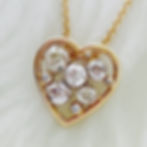Antique Diamonds
OLD MINE CUTS, OLD EUROPEAN CUTS, AND THE HISTORY OF THE ROUND BRILLIANT DIAMOND
 |
TREASURED THROUGHOUT HISTORY
|
 |
Trade routes between Europe and the East introduced Europeans to diamonds that were already being cut and polished in India. By the 1700s, Europeans had begun to develop their methods for cutting and polishing diamonds to optimize light and sparkle. Old Mine Cut diamond, photo credit, GIA.edu |
 |
The Old Mine Cut was introduced around the Mid-1700s and became the first industry-standard cut. Old mine cuts are round but with a squarish, more bulky shape. They were cut to preserve carat weight, often sacrificing a perfectly round appearance for a larger polished stone. They have a higher crown, a larger table, and a larger culet. The facets were designed to sparkle in candlelight, and thus they often display more fire (play of rainbow colors) over modern diamonds, which are cut to optimize brilliance. |
 |
The Old European Cut began to eclipse Old Mine Cut diamonds as an industry standard by the Mid-1800s, although both cuts were popular through the early to mid-1900s. Advances in technology and science allowed diamond cutters to understand more about the geometry of light play and allowed for better, more efficient cutting and polishing. Old European Cuts also have a higher crown than modern diamonds but a smaller table and slightly smaller culet than an Old Mine Cut.
Old European Cut diamond solitaire, Photo Credit, gemsociety.org |
Like snowflakes, no two are exactly alike. Treasures of times long gone, diamonds will never again be cut and shaped like the ones found in antique and vintage pieces.
 |
Resetting your heirloom and antique diamonds allows you to enjoy them for generations to come! Stop by the gallery or schedule an appointment to learn more and transform your heirlooms into the pieces you've always dreamed of! |


